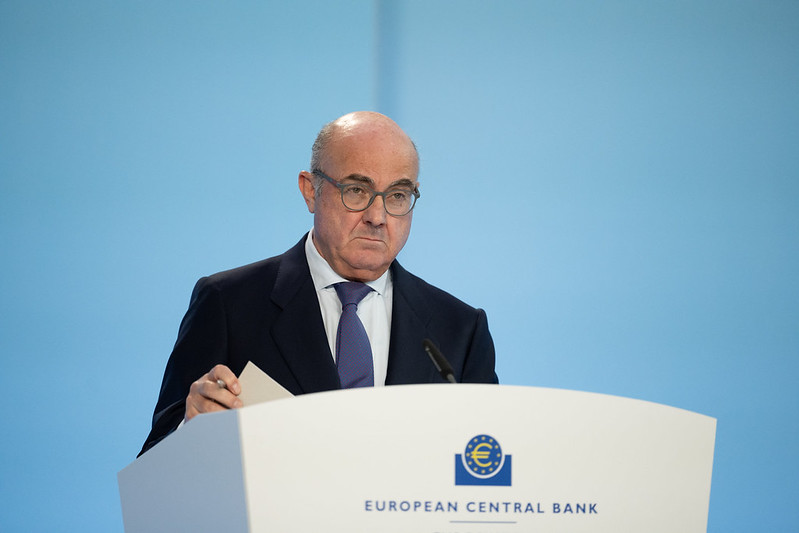ECB’s de Guindos: Markets Understood Well What It Means for ECB to Be in a ‘Good Place’
16 June 2025

By David Barwick – FRANKFURT (Econostream) – European Central Bank Vice President Luis de Guindos on Monday confirmed that ECB President Christine Lagarde’s insistence that the ECB was in a good place meant that a pause in monetary policy easing could be appropriate.
In an interview with Reuters, de Guindos was asked explicitly whether markets had correctly interpretated Lagarde as pointing to a pause. The projections were the key to ECB policy decisions, and the resolution of trade tensions was ‘by far the most relevant factor of uncertainty’ in these, he said, adding that no one could know the ultimate outcome or its inflation implications.
‘Having said that, markets have understood perfectly well what the President said about being in a good position’, he said. ‘Even in this context of huge uncertainty, I think that markets believe and discount that we are very close to our target of sustainable 2% inflation over the medium term.’
The assumption of one more rate cut embedded in the June projections ‘is not important’ in relation to trade’s influence, he said.
Tariffs’ initial impact was inflationary, but in the medium term, they ‘reduce both growth and inflation’ via demand, he said. In the longer term, the potential fragmentation and supply chain disruptions of an all-out trade conflict were inflationary, he said.
This is something the ECB would have to consider ‘in the future’, but over the two-year projection horizon, tariffs would have a negative effect on growth and inflation, he reiterated.
Inflation would firm in 2027 because neither the strength of the euro nor the weakness of energy prices seen in 2026 would continue, he said. Still, uncertainty was huge, so the ECB had to stick to its data-dependent, meeting-by-meeting approach, he said, noting however that the ECB had already eased policy by 200bp.
Asked if he were worried about undershooting, de Guindos reaffirmed that inflation was headed in the ‘right direction’, and dismissed the idea that particularly low 1Q readings would dis-anchor expectations. Wage growth was headed for a level of 3% and the risk of undershooting was ‘very limited in my view’, he said.
‘Clearly, 1.4% [HICP in 1Q 2026] is below target’, he said. ‘But we look at the medium term, and in the medium term there are other factors that can compensate for the short-term elements that can temporarily bring inflation down.’
Fiscal policy in Europe was still subject to high uncertainty, he said. If anything, given taxation plans in the US, with its ‘already challenging’ fiscal position, fiscal policy there would ‘catch the eye of markets more and more in the future’, he said.
In Europe, though greater defence spending is needed, some countries have limited policy room to manoeuvre, he noted. In any case, given the time it will take for spending to materialise, ‘the impact on inflation and growth is not going to be material in the short term’, he said.
The US dollar’s role as a global reserve currency was not threatened in the short run, he said, but the dollar’s depreciation was nevertheless ‘the main element that indicates some doubts about the new US policies’, he said. ‘That's quite clear.’
A euro at $1.15 was ‘not going to be a big obstacle’, he said. The orderliness of movements was the more important aspect, he said. A ‘clear overshooting’ would be ‘something we should analyse’, he said.
‘So far, the evolution has been quite controlled’, he said. ‘I would not say that the exchange rate has been extremely volatile so far, or that we have seen a very rapid appreciation.’
